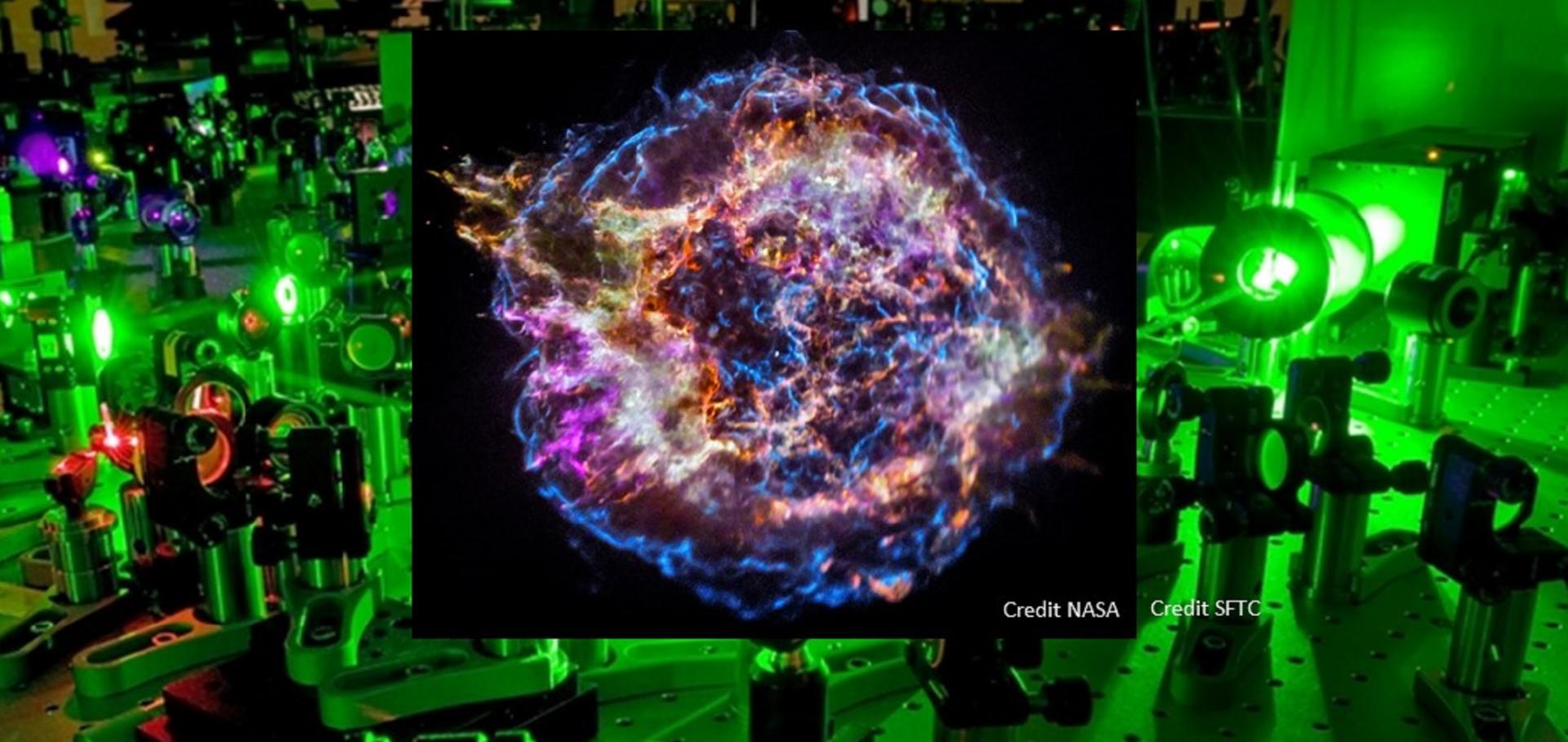A numerical model of resistive generation of intergalactic magnetic field at cosmic dawn
Abstract:
Miniati and Bell (2011) proposed a mechanism for the generation of magnetic seeds that is based the finite resistivity of the low temperature IGM in the high redshift universe. In this model, cosmic-ray protons generated by the first generation of galaxies, escape into the intergalactic medium carrying an electric current that induces return currents, $j_t$, and associated electric fields, $\vec E=\eta\vec j_t$ there. Because the resistivity, $\eta$, depends on the IGM temperature, which is highly inhomogeneous due to adiabatic contraction and shocks produced by structure formation, a non-vanishing curl of the electric field exists which sustains the growth of magnetic field. In this contribution we have developed an approximate numerical model for this process by implementing the source terms of the resistive mechanism in the cosmological code CHARM. Our numerical estimates substantiate the earlier analysis in Miniati and Bell (2011) which found magnetic seeds between 10$^{-18}$ and 10$^{-16}$ Gauss throughout cosmic space at redshift z~6, consistent with conservative estimates of magnetic fields in voids at z~0 from recent gamma-ray experiments.Confining the high-energy cosmic rays
Abstract:
Diffusive shock acceleration is the prime candidate for efficient acceleration of cosmic rays. Galactic cosmic rays are believed to originate predominantly from this process in supernova remnant shock waves. Confinement of the cosmic rays in the shock region is key in making the mechanism effective. It has been known that on small scales (smaller than the typical gyroradius) high-amplitude non-resonant instabilities arise due to cosmic ray streaming ahead of the shock. For the efficiency of scattering of the highest energy cosmic rays it is of interest to determine the type of instabilities that act on longer length scales, i.e. larger than the cosmic ray gyroradius. We will present the results of our analysis of an instability that acts in this regime and will discuss its driving mechanism and typical growth times.


